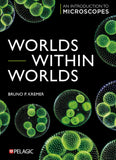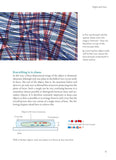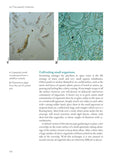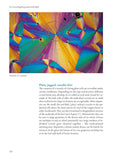
Worlds within Worlds
An Introduction to Microscopes
- A comprehensive beginner's guide to using a microscope.
- Step-by-step chapters make the techniques and skills easy to learn.
- Richly illustrated with instructive diagrams and photographs.
- Worlds within Worlds doesn’t skip a beat. Even seasoned microscopists will find something useful within these pages.
—Desirée Moffitt, microscopist and content creator
- microbiology
- microscope
- microscopy
Description
A microscope is a gateway to another dimension, allowing us to explore the fascinating realm of microorganisms. From the colonies of green algae that grace the cover of this book, to bacteria, cellular structures and protozoa – an entire world of life, almost limitless and yet invisible to the naked eye, awaits through the lens of a microscope.
Until now there has been no book that offers easy access to the exciting and mind-expanding world of microscopy. Practical, compact and accessible, this guide is written especially for beginners. It provides help in learning the correct use of a microscope and the production of preparations. Structured clearly in 25 short chapters, it allows the reader to progress in manageable stages. Each step focuses on a particular theme, introducing the relevant techniques. From illumination to observation, from slide preparation to staining, this book supplies all the building blocks needed for skilled use of microscopes.
With this step-by-step approach, the way into the wonderful visual universe of the miniature becomes very simple, even if your first microscope is only a budget model: most of the activities suggested here work using a basic instrument without the more sophisticated accessories. Indeed, the history of microscopy shows that discoveries of great significance have been possible even with rather modest equipment. And this is just as true today. Illustrated throughout with photographs and diagrams, this book is the perfect companion as you discover the richness of microscopic life.
DOI: 10.53061/PBAH6738
Table of Contents
Foreword
Preface
Introduction: Why use a microscope?
Creating your own micro-laboratory
1. Structure of the microscope
2. How to use your microscope
3. Light – transmitter of information
4. Orders of magnitude
5. Three-dimensional images
6. Brownian movement
7. Simple wet mounts
8. Preparation by squashing
9. Tissue under the lens
10. Animal cells
11. Plasma flows and oblique lighting
12. Osmotic processes
13. Documentation
14. Tiny aquatic creatures
15. Cocci and bacilli
16. Preparing sections
17. Plant organs
18. Woody tissues
19. Distinctive animal tissues
20. Making permanent specimens
21. Surface examination
22. Investigating polarised light
23. Thin sections
24. Dusts and Rheinberg illumination
25. Microscopic photographs
Index
Reviews
- Worlds within Worlds is an enlightening exploration of invisible life, expertly curated by Bruno P. Kremer. The book seamlessly guides readers through the fascinating history and revolutionary impact of microscopes, but more importantly, it thoroughly demonstrates how and when to use them. Through engaging prose and captivating visuals, Kremer skillfully blends scientific insight with a passion for discovery, creating a comprehensive guide that celebrates the marvels concealed in the unseen dimensions of our bodies and environments. Worlds within Worlds will be an invaluable resource for those studying – or simply intrigued by – the very tiny.
—Jake M. Robinson, author of Invisible Friends: How Microbes Shape Our Lives and the World Around Us - If you are brand new to microscopy, Bruno P. Kremer’s book is for you. From the basics on how to use a microscope to tips and techniques on how to get the most out of your sample, Worlds within Worlds doesn’t skip a beat. Even seasoned microscopists will find something useful within these pages.
—Desirée Moffitt, microscopist and content creator
About the Author
Bruno P. Kremer studied biology, chemistry and geology, and was a professor at the University of Cologne until 2012. He has published numerous books on topics ranging from natural history to environmental education and regional studies. His work has been translated into 14 languages.Bibliographic Information
 184 pages
184 pages - Colour illus, figures
- BISAC SCI000000, REF020000, SCI045000
- BIC PD, GPS, PSG























